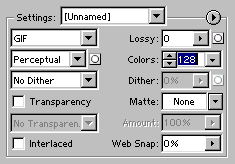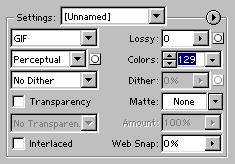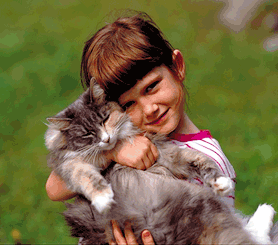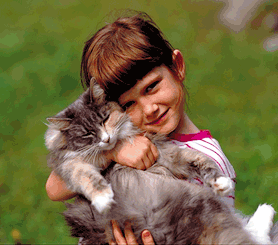For palette-based formats like GIF and PNG, file size is directly related to the size of the color palette, or the number of colors in the image. As the number of colors in an image crosses a power of two, the file size jumps. A 33-color image must use a six-bit palette, while a 32-color image can use a 5-bit palette. Smaller palettes mean smaller codes (representing pixel patterns), which makes for smaller files. So minimizing the number of colors in index-color images like GIFs and PNGs will minimize file size.
The compression schemes used in GIFs (LZW) and PNGs (Deflate) are dictionary-based encoding algorithms. Dictionary based compression algorithms substitute shorter codes for longer patterns of strings within the data stream. Pixel patterns (substrings) in the data stream found in the dictionary are replaced with a single code. If a substring is not found in the dictionary, a new code is created and added to the dictionary. Compression is achieved when smaller codes are substituted for longer patterns of data.
The code size is based on the number of bits per pixel, and depends on the maximum length code within your dictionary. Thus the smaller your bit-depth, the smaller the codes representing your pixel pattern strings, and the smaller the file. Here’s an example image at 128 and 129 colors (see Figure 1).
Of course a JPEG would be a more appropriate format for this photograph, and would be about half this size. Choosing the right format for your images is the first step in optimizing web graphics. At lower bit-depths, banding can appear in smooth-toned images. Try quantizing your image to different palettes to minimize banding.
PNG Compression
PNG uses the deflate compression algorithm which is a newer, more efficient cousin of LZW. Deflate is designed to be free of patent problems. Deflate is a combination of the LZ77 algorithm found in zip programs like WinZIP and gzip, and Huffman coding. Deflate typically compresses files 20 to 30 percent smaller than LZW, which is the difference you’ll find between gzip and compress. PNGs use a similar substitution technique, but are generally 5 to 25 percent smaller than GIFs, although there are exceptions. In addition to horizontal “scan-line” pattern substitution PNGs sometimes substitute for vertical patterns. PNG can also truncate color palettes. In general, the smaller the color palette, the smaller the overall file size.
Conclusion
To minimize the file size of palette-based image formats like GIF and PNG, minimize their bit-depth, or number of colors. Each time you pass a power of two, file size jumps higher. By minimizing the number of colors, and maximizing the flat-color areas you will create smaller, more efficient images destined for the Web.
Further Reading
- LZW Data Compression
- Mark Nelson breaks down the LZW compression algorithm for Dr. Dobb’s Journal of October 1989.
- Graphics: Use Lossy Compression for Smaller GIFs and PNGs
- Lossy compression lets you squeeze more bytes out of your GIFs and PNGs. Lossy compression increases identical pixel patterns to improve compression in indexed-color images.
- Graphics: Use Weighted Optimization
- Weighted optimization or regional compression applies different degrees of compression to different areas of your image. By varying the quality within images you can improve file size.
- Optimizing Web Graphics
- Chapter summary from Speed Up Your Site, shows how to correct, optimize, and compress images for minimum file size and maximum quality.
- PNG Home Site
- Greg Roelofs site devoted to all things PNG.




